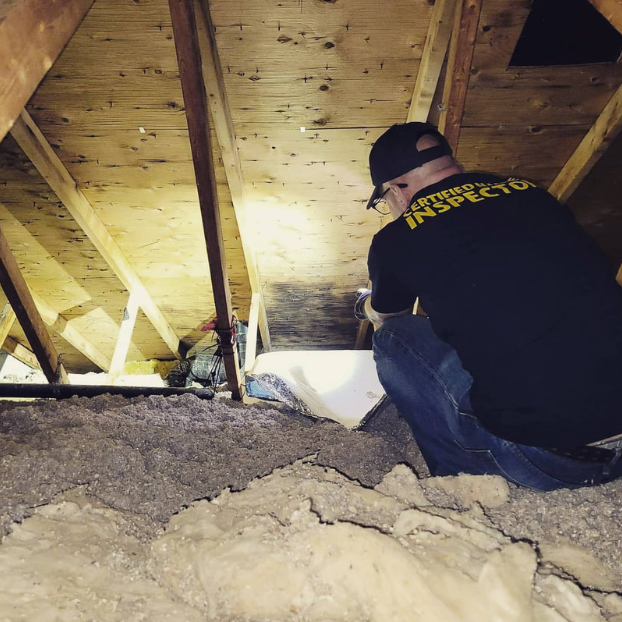Building inspection is a critical process in the construction and real estate industries, serving as a safeguard for homeowners, buyers, investors, and developers. Whether you are purchasing a new home, renovating an existing structure, or constructing a new building, a thorough building inspection provides valuable information about the condition, safety, and compliance of the property.
This article explores what Inspection de bâtiment entail, why they are important, the different types of inspections, key areas examined, and how to prepare for one.
What is Building Inspection?
A building inspection is a detailed examination of a property’s physical structure and systems by a qualified professional, usually a certified building inspector or engineer. The goal is to assess the condition of the building, identify any defects or safety hazards, and ensure that the property meets local building codes and regulations.
Building inspections can occur at various stages of a property’s life — before purchase, during construction, or periodically for maintenance.
Why Building Inspections are Important
- Safety Assurance: Inspections help identify potential safety risks such as structural weaknesses, faulty wiring, or plumbing issues that could lead to accidents or health hazards.
- Financial Protection: By revealing hidden defects, inspections allow buyers to avoid costly repairs after purchase. Sellers can also use inspection reports to justify asking prices or negotiate repairs.
- Compliance with Regulations: Inspections verify that buildings comply with local codes, zoning laws, and safety standards, which is essential for legal occupancy and resale.
- Maintenance Planning: Regular inspections help property owners plan maintenance and repairs proactively, preventing deterioration and preserving property value.
- Peace of Mind: Knowing the true condition of a property provides confidence and clarity during real estate transactions.
Types of Building Inspections
Depending on the purpose and timing, there are several types of building inspections:
- Pre-Purchase Inspection: Conducted before buying a property to evaluate its condition and identify issues.
- New Construction Inspection: Performed during different stages of construction to ensure that work complies with plans, codes, and quality standards.
- Pre-Listing Inspection: Sellers may conduct this to identify and fix issues before putting a property on the market.
- Periodic Maintenance Inspection: Regular inspections of occupied buildings to monitor ongoing maintenance needs and safety.
- Specialized Inspections: Focus on specific areas such as termite/pest inspection, roof inspection, electrical inspection, or HVAC system review.
Key Areas Covered in a Building Inspection
A comprehensive building inspection covers several critical components:
- Foundation and Structure: Inspectors check for cracks, settling, moisture damage, and overall stability of the foundation, walls, beams, and framing.
- Roofing: The condition of shingles, flashing, gutters, and drainage systems is examined to detect leaks, damage, or wear.
- Electrical Systems: Wiring, outlets, circuit breakers, and safety devices like smoke detectors are evaluated for functionality and code compliance.
- Plumbing: Pipes, faucets, water heaters, drainage, and sewage systems are assessed for leaks, corrosion, and proper operation.
- Heating, Ventilation, and Air Conditioning (HVAC): Inspectors check the efficiency, safety, and maintenance of heating and cooling systems.
- Interior and Exterior: Doors, windows, floors, ceilings, walls, and exterior siding or paint are reviewed for damage or deterioration.
- Insulation and Ventilation: Proper insulation and ventilation are essential for energy efficiency and indoor air quality.
- Pest and Mold Inspection: Signs of termite damage, rodent infestation, or mold growth are identified, as these can seriously affect structural integrity and health.
The Inspection Process
- Scheduling: The property owner or prospective buyer arranges an inspection with a licensed professional.
- On-Site Evaluation: The inspector conducts a thorough walk-through, examining all accessible areas and systems.
- Use of Tools: Inspectors may use specialized equipment like moisture meters, thermal imaging cameras, or electrical testers.
- Report Preparation: After the inspection, the inspector provides a detailed report outlining findings, photographs, and recommendations.
- Review and Follow-Up: Buyers or owners review the report and decide on repairs, negotiations, or further specialist evaluations.
How to Prepare for a Building Inspection
- Make the Property Accessible: Ensure all areas such as attics, basements, crawl spaces, and utility rooms are accessible.
- Gather Documentation: Provide any relevant maintenance records, permits, or previous inspection reports.
- Address Safety Hazards: Remove obstacles and secure pets to facilitate a smooth inspection.
- Attend the Inspection: Buyers or owners are encouraged to attend to ask questions and gain a better understanding of the property condition.
Choosing the Right Inspector
Hiring a qualified and experienced building inspector is vital for an accurate assessment. Look for certifications from recognized bodies, positive reviews, and good communication skills. A thorough inspector will provide clear explanations and a comprehensive, easy-to-understand report.
Conclusion
Inspection de bâtiment is an essential part of responsible property ownership, purchase, and maintenance. They provide crucial insights into the structural integrity, safety, and compliance of a building, helping prevent costly surprises and ensuring peace of mind. Whether you’re buying your dream home, constructing a new building, or maintaining an existing property, a professional building inspection is a smart investment that protects your financial and personal well-being.
By understanding the process, preparing adequately, and working with a trusted inspector, you can navigate property transactions and upkeep with confidence. Ultimately, building inspections contribute to safer, more durable, and more valuable buildings — a foundation for a secure future.
